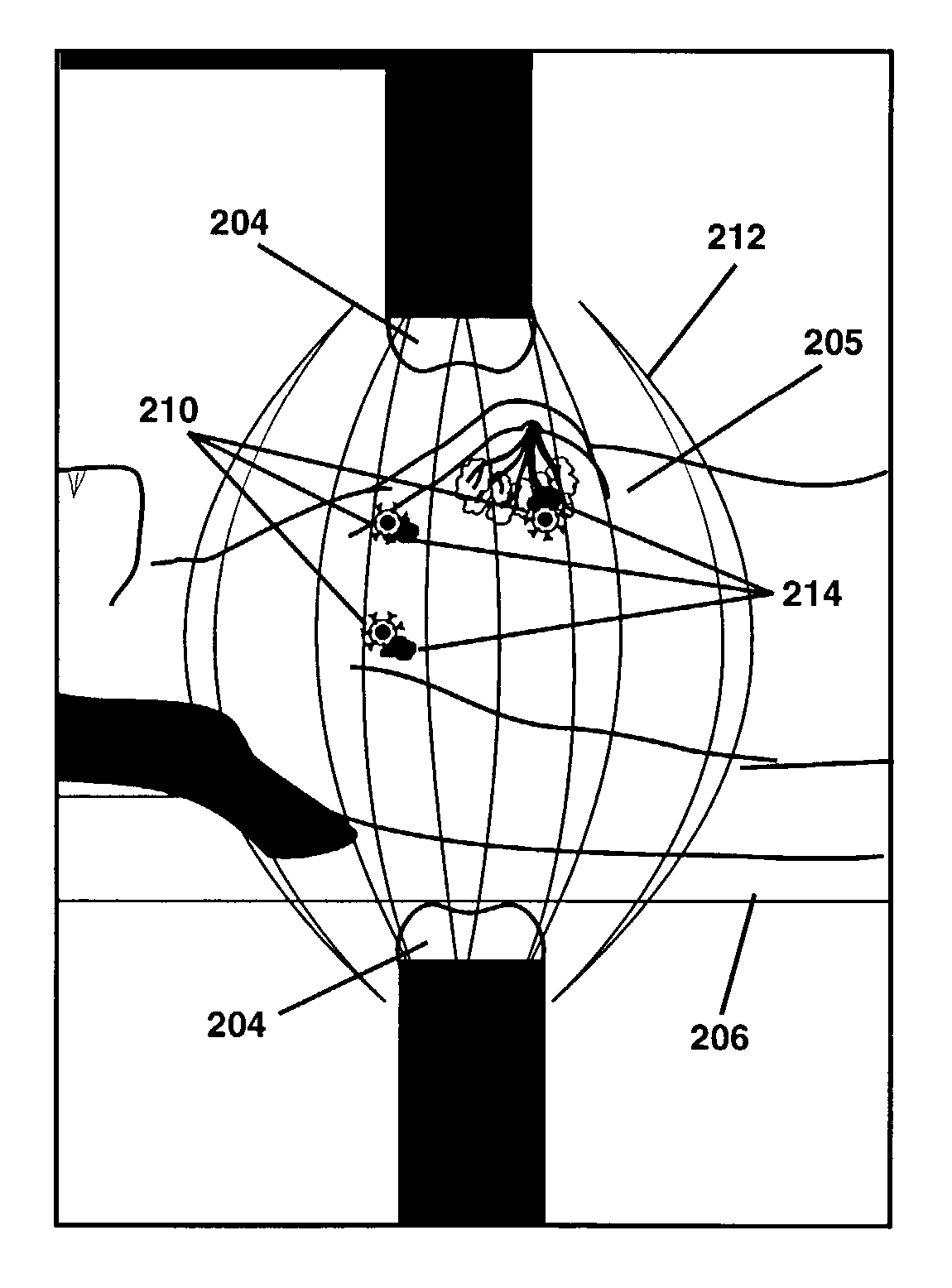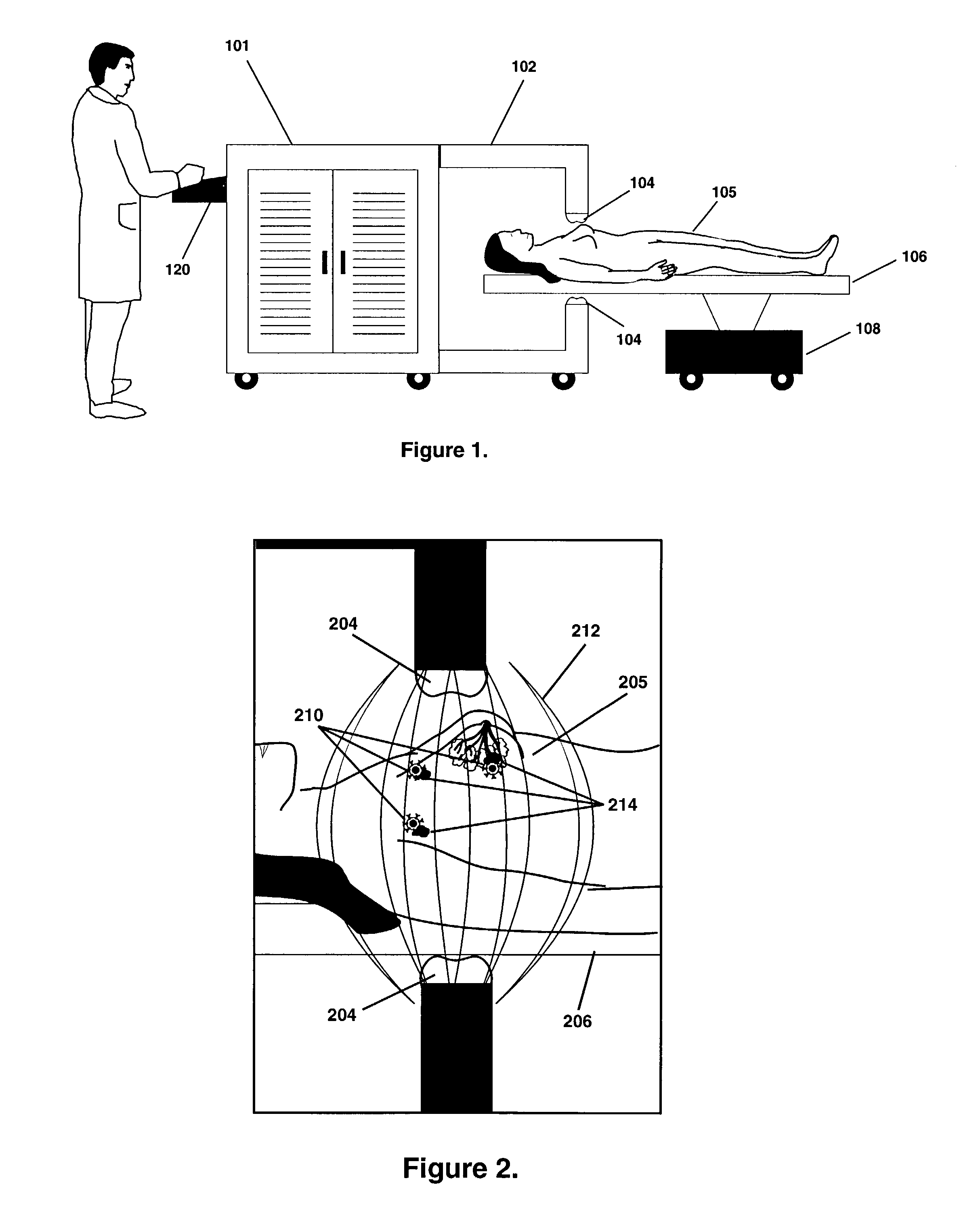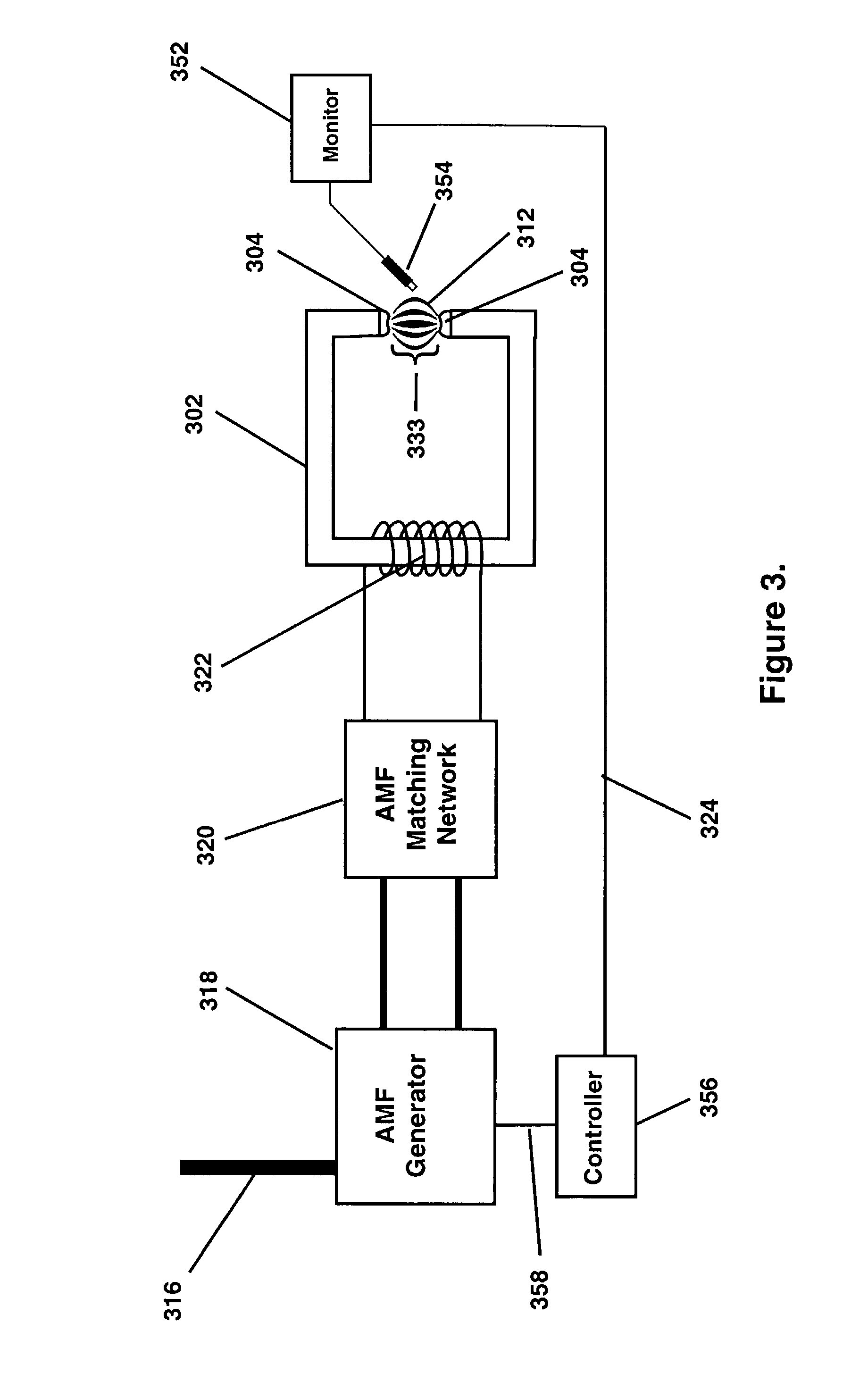Thermotherapy via targeted delivery of nanoscale magnetic particles
a nano-scale magnetic particle and nano-scale technology, applied in the field of thermotherapy, can solve the problems of cancer defying current treatment options, invasive or only modest success for patients, and exposing them to considerable toxicity, and achieve the effect of short treatment period and minimal invasion
- Summary
- Abstract
- Description
- Claims
- Application Information
AI Technical Summary
Benefits of technology
Problems solved by technology
Method used
Image
Examples
example 1
Identify Ferromagnetic Particles with Proper Curie Temperatures
[0083]For magnetic materials, the saturation magnetization (4πMs) and the Curie temperatures (Tc) depend on the material composition. The Curie temperature of the material may lie in the range 40° C.–150° C., although it may also lie outside this range. For example, manganese alloys of the general formula RMn2X, where R is a rare earth, such as La, Ce, Pr, or Nb, and X is either Ge or Si, exhibit Tc's of 30–60° C. and may be used in bioprobes. Other oxides of ferrite, garnets, and spinels may be used as bioprobes. For example, substituting (doping) Gd and Al for Fe of Y3Fe5O12 garnets provides control of both Tc and 4πMs. These types of ferromagnetic media are commercially available from, for example, TRAK Ceramics, Hagerstown, Md.; Ceramic Magnetics, Fairfield, N.J.; and TMC Magnetics, Pine Brook, N.J. Sub-micron size particles may be produced through ball milling, solution-precipitation, or sol-gel processing of these ...
example 2
Synthesis of Bio-Compatible Coating
[0087]The bioprobe particles selected during EXAMPLE 1 may be coated with a biocompatible polymer according to a following embodiment of the procedure. Poly (methacrylic acid-co-hydroxyethylmethacrylate) as a biocompatible coating material for bioprobes may be synthesized from methacrylic acid and hydroxyethyl methacrylate using free-radical polymerization in the presence of the magnetic particles. To avoid aggregation of the magnetic nanometer sized particles during polymerization, the polymerization may be carried out in a microemulsion environment consisting of water / toluene / sodium bis-2-ethylhexyl sulfosuccinate. The sodium bis-2-ethylhexyl sulfosuccinate acts as an ionic surfactant to make a stabilizing layer around the magnetic particles. Methacrylic acid (1.45×10−2 moles), hydroxyethylmethacrylate (5.38×10−4 moles), N,N′-methylene bisacrylamide (8.12×10−5 moles), and 2,2′-azobisbutyronitrile (7.62×10−5 moles) are added to a mixture of water / ...
example 3
Attachment of the Antibodies to the Particles
[0088]The attachment of the antibodies to the coated magnetic particles may be accomplished by use of a small “linker” molecule with differentiated terminals that permit covalent antibody attachment to the biocompatible polymer coating. Attachment occurs in the Fc region using the electrophilic C-terminal residue of the antibody to react with the nucleophilic portion of the linker. The other terminus of the linker may be activated by UV photolysis. The photoactive end of the linker may react with the polymer coating. Conjugation of the antibodies to the nanoparticles using this technique may proceed in the following manner. The antibody may be covalently conjugated to 4-[p-azidosalicylamido]butylamine (ASBA) using 1-ethyl-3-(3-dimethylaminopropyl)-carbodiimide, EDC. The EDC may activate the C-terminal carboxyl function, making it susceptible to attack by the primary amino group of the ASBA. The antibody, covalently tethered to the linker,...
PUM
 Login to View More
Login to View More Abstract
Description
Claims
Application Information
 Login to View More
Login to View More - R&D
- Intellectual Property
- Life Sciences
- Materials
- Tech Scout
- Unparalleled Data Quality
- Higher Quality Content
- 60% Fewer Hallucinations
Browse by: Latest US Patents, China's latest patents, Technical Efficacy Thesaurus, Application Domain, Technology Topic, Popular Technical Reports.
© 2025 PatSnap. All rights reserved.Legal|Privacy policy|Modern Slavery Act Transparency Statement|Sitemap|About US| Contact US: help@patsnap.com



